Your inventory efforts can be an effective tool to improve your bar’s profitability. At Bar-i, our goal is to help you identify all products that are underperforming and make recommendations that will help you correct this problem. We do this by tracking individual products and precisely comparing how many servings were poured vs. sold (level 3 inventory).
The reason this effort is so important is because most bars are missing 15-20% of everything that’s poured. Influential business consultant Peter Drucker once famously said, “If you can measure it, you can manage it.” We take these words very seriously. We believe that if you can measure the loss that your bar is experiencing, it allows you to manage it much more closely.
This precise tracking of product usage enables us to provide recommendations that will significantly reduce your shrinkage. It’s common for our clients to get their shrinkage below 5% after implementing our recommendations. On average, our clients are able to lower their liquor cost by 3% as a result. Over time, those extra profits you’re capturing will make a big impact on your business.
Considerations that Impact the Products We Track
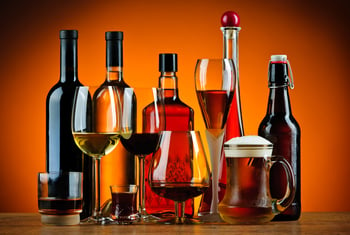 There are four main categories of products that our inventory system tracks:
There are four main categories of products that our inventory system tracks:
- Draft beer
- Bottled and canned beer
- Liquor
- Wine
These are the products which experience the highest sales volume. The nature of your business model will determine which of these product categories are the most popular. Many of our bars do most of their sales volume in draft beer and liquor. However, some high-end clients do a large volume in wine sales as well. Based on the sales volume of these products, small adjustments can make a big difference in your profitability.
When we designed our software, we put a lot of thought into which types of products we would track. Ultimately, there were several considerations which led us to primarily focus on those four product categories:
- Less is more – We want to be pragmatic with our efforts. We’re not just tracking things for the sake of it. We’re trying to make a significant difference in your profitability. If tracking a particular product will improve your operations in a meaningful way, we want to do it. If not, we’d rather not put in the effort for something that will only deliver marginal returns on the time and work involved.
- Make a positive impact – We aren’t simply creating busy work for your team. When we track what’s missing, we can usually identify why it’s missing and help recommend a way to fix the problem.
- Assist with ordering and managing inventory on-hand – We track usage very accurately (down to the ounce). This allows us to calculate average usage per day and then compare that figure with how much inventory you have on-hand. Our ordering system is based on making sure you have your desired number of days’ worth of each product on-hand at all times. We make our suggested orders based on the levels that you set.
While this ordering assistance is a by-product and not the main purpose of what we track, it’s still a great benefit. It helps managers save time and owners tie up less capital in inventory on-hand. We’re typically able to reduce the amount of inventory on-hand by about half for most of our clients because you’ll no longer be ordering based on fear of running out of products. Instead, you’ll be ordering based on real data regarding your daily usage of each product.
Products Excluded from Tracking During Inventory
In order to provide the proper attention and focus on the most important products at your bar, we’ve chosen to exclude a variety of items from our inventory tracking. For each of the following products, we’ve carefully thought through the reasons why we feel it’s simply not a productive use of our time to track their usage.
Generic Cordials
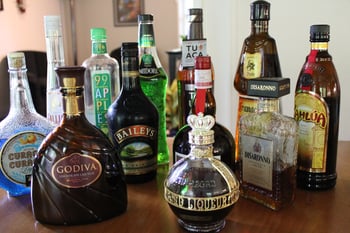 Generic cordials encompass a variety of products, including items such as triple sec, blue curacao and peach schnapps. There are several reasons why we don’t track the usage of cordials:
Generic cordials encompass a variety of products, including items such as triple sec, blue curacao and peach schnapps. There are several reasons why we don’t track the usage of cordials:
- No record of sales – For many cocktails, the amount of cordial used is a matter of customer taste so there’s no way of accurately ringing it into your POS system.
- Low risk of abuse – People like taking shots of nice tequila or whiskey, but you don’t see too many shots of blue curacao or other cordials being poured. As a result, it’s much less likely that these products will be given away to customers or drank by employees during their shift.
- Low purchase price – Liter bottles of these products are typically only about $9, whereas core liquor bottles often cost $20 or more. Therefore, variances in usage of cordials have a significantly lower impact on your profitability than missing core liquor items do.
- Creates unnecessary distractions – We used to track these items in the past, but we found that they created a lot of unnecessary noise. Due to the differences in customer taste, there would be significant variances in usage of these products which would ultimately distract us from the real purpose of identifying opportunities to improve profitability. Tracking hard liquor usage gives us actionable data to improve your profitability and if we can block out extraneous information that obscures these important recommendations, it will help you make more money.
While we don’t specifically track the usage of cordials, we do count these products so that we can include them in our ordering recommendations.
Bottomless Mimosas
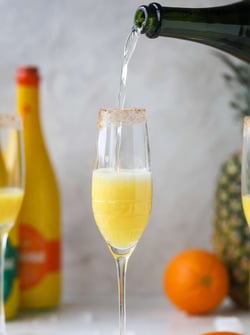 While we track usage of champagne products, we typically exclude the ones used for bottomless mimosas because there is no record of sales. The server has to ring up the drink when it’s first ordered, but the subsequent refills typically aren’t rung into the POS. As a result, it becomes hard to accurately track the usage of these products. There will always be a variance between what was used and what was sold, which creates a distraction from trying to identify products that are truly missing.
While we track usage of champagne products, we typically exclude the ones used for bottomless mimosas because there is no record of sales. The server has to ring up the drink when it’s first ordered, but the subsequent refills typically aren’t rung into the POS. As a result, it becomes hard to accurately track the usage of these products. There will always be a variance between what was used and what was sold, which creates a distraction from trying to identify products that are truly missing.
One way to simplify this process is to use a specific type of champagne for bottomless mimosas and a different brand of champagne for situations when customers order an inexpensive glass. This allows you to track the usage of all champagne by the glass and not worry about usage for bottomless drinks which are impossible to track accurately.
Liquor Products Used by the Kitchen
The most common example in this category is the well bourbon used by many restaurants in their BBQ sauce. If you have a well bourbon or other liquor products used by the kitchen in large quantities, we’ll exclude it from our tracking because there is typically no record of kitchen usage. In most instances, the cooks will come and grab a cup as needed for their recipes.
We recommend that you create a “no charge” button on your POS for liquor items used by the kitchen. In this situation, your cooks would have to ask the bartender to ring up the specific amount of whiskey needed for BBQ sauce as “kitchen usage bourbon” and the recipe for this POS button would contain the specific amount of whiskey needed for the food item being prepared.
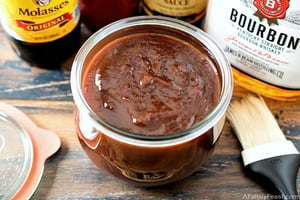 This will allow you to run a report seeing how often the kitchen is requesting liquor for cooking. When tracking kitchen liquor usage in this manner, we’ve found some occasions at bars where more bourbon is being “used” in the BBQ sauce than is actually required. This is usually a clear sign that shots are being taken by the kitchen staff with the excess bourbon.
This will allow you to run a report seeing how often the kitchen is requesting liquor for cooking. When tracking kitchen liquor usage in this manner, we’ve found some occasions at bars where more bourbon is being “used” in the BBQ sauce than is actually required. This is usually a clear sign that shots are being taken by the kitchen staff with the excess bourbon.
If you find that you’re having problems with the kitchen staff taking shots of the bourbon they cook with, we recommend using two different types of well bourbon at your bar. One brand is served to customers and the other brand is strictly used for cooking. This makes it much easier to track the usage of these items, and it allows us to include the usage of the well bourbon served to customers on our weekly inventory reports.
Miscellaneous Food Items
While certain food items such as soda syrup, coffees, teas and juices are commonly used in drinks made by the bar, we’ve chosen not to track them. There are several reasons why we believe tracking these items isn’t a good idea:
- No record of sales – Customers who order sodas typically get free refills. There is variable portioning for coffees and some teas when they’re made in bulk. The amount of juice added to different drinks can vary. As a result, it is very difficult to get an accurate record of usage for these items.
- Harder to track on invoices – Most of the products we track come from liquor distributors, and the vast majority of the items listed on invoices from distributors are being tracked. This makes it very easy to track deliveries of these products. Conversely, a lot of the miscellaneous food items used by the bar come on the food invoices. Tracking these deliveries requires us to hunt for 1-2 items on an invoice that is often 3-4 pages long.
When you have to enter 95% of the items on an invoice (as is the case from liquor distributors), it’s easy to do. But when you’re only looking for 1-2 items with potentially nebulous product descriptions that might or might not be on a long food invoice, it can often be a waste of time.
Due to the difficulty looking at the invoicing, it becomes hard to calculate the usage of these products. If you can’t account for what was purchased and delivered, you can’t calculate usage and you can’t do predictive ordering for these products. As a result, we tend to suggest using fixed pars on these items when doing your ordering.
Exceptions to Our Typical Tracking Criteria
There are certain items that seem to fit our criteria for what would be excluded from tracking, but we do in fact track them. These include:
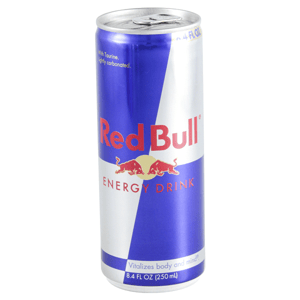 Red Bull – We do track Red Bull and other types of energy drinks. These items are typically more expensive than other mixers, and they frequently go missing. However, it can be a little tricky to track these items because a lot of cocktails call for a half can or a splash of Red Bull, which results in portions of cans getting wasted at the end of the night.
Red Bull – We do track Red Bull and other types of energy drinks. These items are typically more expensive than other mixers, and they frequently go missing. However, it can be a little tricky to track these items because a lot of cocktails call for a half can or a splash of Red Bull, which results in portions of cans getting wasted at the end of the night.
While there should be some natural waste with these items, it should be minimal. On average, you shouldn’t be wasting more than a half can per day (some days there will be a half can to a full can wasted, but other days the entire can will be finished). Therefore, you shouldn’t be wasting more than about 3.5 cans of Red Bull per week.- Specialty items – Sometimes we may track a specialty item that only makes sense to monitor for your specific bar because it’s beneficial to your profitability. Some examples include retail items such as t-shirts, single-portion sales (kombucha bottles or single-portion bottles of wine), or shisha (for hookah bars).
Being Selective about the Items Tracked Provides a Better Return on Your Inventory Efforts
We believe the best approach is to focus on fewer things that will make the biggest difference to your bar’s profitability. Your staff is busy running the bar and if we’re going to use their valuable time counting inventory items, it needs to be beneficial to your business.
The biggest opportunity for improvement you’ll experience when using Bar-i’s software is the ability to increase sales by significantly reducing shrinkage. When you give away and overpour less, it will inevitably lead to an increase your sales. If people are receiving properly portioned drinks, they’re more likely to order an extra one at the end of the night than if they’ve received heavy pours all night long. Also, if everything is being rung into your POS, you’ll capture more sales than when drinks are being given away. Limiting our tracking to important items ensures that you receive the maximum benefit from these efforts.
In order to address your ordering needs, we suggest that you use a manual system for the items that aren’t being tracked. Some ways to do this include:
- Rough counts – Count full cases or estimate half cases to make counting these items as fast and efficient as possible
- Manual pars – Identify a set amount of these items to be kept as backup at all times
- Include in your side work – Once a week, include an item on your side work checklist for a server to check and make sure to-go containers, sugar packets and other miscellaneous items are meeting their manual pars
If you’d like to learn more about how Bar-i can help you streamline your operations and maximize your profitability, please contact us today to schedule a free consultation. We serve bars nationwide from our offices in Denver, Colorado.


-1.png)